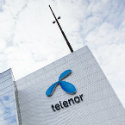Telenor Won't Raise Capex as It Gets 5G-Ready
Norwegian incumbent plans to reduce capital expenditure as a percentage of sales during the first part of the 5G era as it remains focused on cost-cutting and digitalization.

Norway's Telenor has no plans to boost overall spending this year even as it starts preparations for the launch of next-generation 5G technology, the company revealed in an earnings statement today.
The operator said it would invest between 16-17 billion Norwegian kroner (US$1.9-2 billion) in capital expenditure this year, excluding the cost of spectrum licenses, after forking out exactly NOK16.8 billion ($2 billion) in 2018.
Telenor Group (Nasdaq: TELN) said one investment priority would be infrastructure modernization, including fiber rollout in the Norwegian market and the upgrade of mobile networks to be "5G-ready."
The update came as the Norwegian incumbent reported a 0.6% dip in sales in 2018, to NOK110.4 billion ($13 billion), and a 3.2% rise in earnings (before interest, tax, depreciation and amortization), to NOK45.3 billion ($5.3 billion).
Telenor's share price was trading down 1.4% in Oslo at the time of publication after the earnings update Wednesday morning.
Operating networks across various Asian and European markets, Telenor has been heavily focused on cost-cutting as it tries to boost profitability in a low-growth telecom environment.
Data gathered by Light Reading shows that employee numbers at the firm dropped by 6,000 in 2017, leaving Telenor with 31,000 employees at the end of that year. (See AT&T, Time Warner Shed 11K Workers in First 9 Months of 2018.)
While the sale of an Indian business with around 4,000 employees was largely to blame for the sharp reduction, executives this time last year warned that investment in digital technologies and the automation of various activities would claim about a fifth of jobs at the company by the end of 2020. (See Downsizing Telenor Pins Margin Hopes on Automation.)
Telenor had few details to offer in its latest earnings report on overall headcount at the business but said earnings had improved markedly at its Danish operation because of layoffs and other cost-cutting activities. "This explains the EBITDA margin reaching 20% in the quarter, up 10 percentage points compared to last year," it said about the Danish performance.
It also revealed that cutbacks last year led to a fall of NOK1.2 billion ($140 million) in operating costs, or 3% of the total, compared with the year-earlier figure.
Excluding its Thai operation, Telenor is guiding for an EBITDA increase of 1-3% across the entire group this year. It has not disclosed details of any revenue targets.
You're invited to attend Light Reading’s Big 5G Event! Formerly the Big Communications Event and 5G North America, Big 5G is where telecom's brightest minds deliver the critical insight needed to piece together the 5G puzzle. We'll see you May 6-8 in Denver -- communications service providers get in free!
Its longer-term forecast does not offer much encouragement to those hoping the arrival of 5G technology would kickstart a new cycle of telco spending. In slides outlining its plans, Telenor said its goal was to reduce the capex-to-sales ratio to about 15% in 2020, from 15.4% in 2017.
Although it is guiding for a "low single digit" organic increase in traffic revenues between now and 2020, reported sales have evidently fallen in recent times.
Despite excitement surrounding 5G, senior technology executives at some of the world's biggest telcos have warned the industry not to expect any 5G-fueled spending splurge in the next few years.
Speaking at last year's Mobile World Congress in Barcelona, Seizo Onoe, the chief technology architect of Japan's NTT DoCoMo Inc. (NYSE: DCM), said his company aimed to continue reducing annual expenditure in the 5G era.
Johann Wibergh, the chief technology officer of UK-headquartered Vodafone Group plc (NYSE: VOD), said there was little scope for additional spending. "Revenue is not growing and has been very flat or rising just 1%, and so there is no room for increasing costs," he said. (See NTT DoCoMo: Capex to Fall With 5G Rollout.)
— Iain Morris, International Editor, Light Reading
About the Author(s)
You May Also Like












